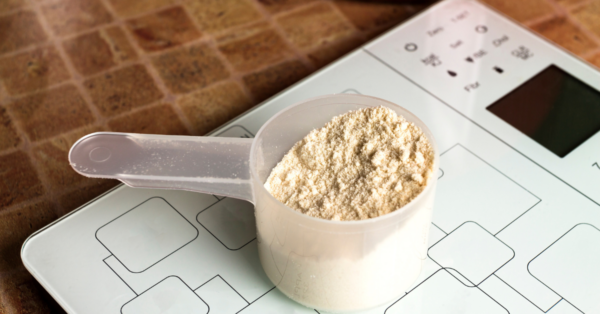Of all the healthy diet plans out there, there are two that are probably the most-researched: the Dietary Approaches to Stop Hypertension (DASH) and the Mediterranean diet.
Both of these diets have been shown to have significant health benefits, and aspects of each inform some of the most common recommendations made by dietitians, physicians, and public health organizations.
But what exactly are the DASH and Mediterranean diets, and which one is better?
DASH Diet Basics
The DASH diet is at its heart a flexible and balanced eating plan that aims to promote heart health. It’s primary outcome, as its name suggests, is to reduce hypertension (high blood pressure) but it has also been shown to help improve other risk factors for cardiovascular disease. (1) (2)
The DASH eating plan recommends daily and weekly nutritional goals in the form of numbers of servings based on the following general principles:
- Eat lots of vegetables, fruits, and whole grains
- Get protein from fish, poultry, legumes, and low-fat or fat-free dairy products
- Include healthy fats from nuts and vegetable oils
- Limit foods that are high in saturated fat, such as fatty meats, full-fat dairy, and tropical oils. Also, avoid trans fats.
- Limit sweets, sugar-sweetened beverages, and other sources of added sugar
- Limit sodium intake
Your individual plan will depend on your overall calorie needs, which are influenced by your age, sex, activity level, and whether your goal is to lose, maintain, or gain weight. To help determine your daily calorie needs and the recommended DASH nutritional goals for your calorie level, visit https://www.nhlbi.nih.gov/health-topics/dash-eating-plan.
As an example, if you need around 2000 calories per day, this is what your plan would look like:
Every day:
- 6-8 servings of grains, preferable whole grains
- 4-5 servings of vegetables
- 4-5 servings of fruit
- 2-3 servings of low-fat or fat-free dairy
- 6 servings of lean meat, poultry, or fish
- 2-3 servings of fat and oils
- 2300mg or less of sodium; 1500mg or less for maximum blood pressure reduction if you have hypertension
Each week:
- 4-5 servings of nuts, seeds, and legumes
- 5 servings or less of sweets and added sugars
Serving sizes are specifically defined for each of these food groups. For example, a serving of grains is one slice of bread or ½ cup cooked rice or pasta. A serving of vegetables is generally 1 cup raw or ½ cup cooked. A serving of meat, poultry, or fish is one ounce, meaning that a 4-oz piece of meat counts as 4 servings.
You can visit the NIH website for further specifics and resources for getting started here.
Variations on the DASH diet have also been studied and found to have the same heart health benefits. In the OmniHeart trial, the original DASH diet was compared with two variations which substituted a small portion (10%) of the daily carbohydrate intake with either protein or unsaturated fat. They found that both variations reduced blood pressure and improved blood lipid levels even more than the original DASH diet. (3)
So in other words, the DASH diet is a thoroughly evidence-backed, well-documented method for reducing cardiovascular risk factors. If you want to follow the DASH eating plan but prefer to eat slightly less carbohydrates and slightly more protein or healthy fat instead, that is just as good and possibly even better for your heart health. Incidentally, the lower carbohydrate with higher unsaturated fat version of the DASH diet that was used in the OmniHeart trial is very similar to a Mediterranean diet. (4)
Mediterranean Diet Basics
The Mediterranean diet is based on the traditional eating patterns of people in countries bordering the Mediterranean Sea (such as Greece, Italy, and several others.) It was observed in the 1960s that these countries had lower incidences of heart disease than the U.S. and northern European countries (5). Since then, extensive research has associated the Mediterranean diet with reduced risk for cardiovascular disease, obesity, diabetes, certain types of cancer, depression, and cognitive decline (6).
Since the cuisines of these countries vary, there is no single definition of the Mediterranean diet, but it has certain key characteristics that are common to eating habits in that region of the world. Those key characteristics include (7) (8)
- High daily consumption of vegetables, fruits, and whole grains
- Plenty of healthy fats, primarily olive oil
- Protein coming largely from fish and legumes, with some poultry and eggs
- Moderate amounts of dairy products
- Very limited red meat intake
- Moderate consumption of red wine
Other habits common in Mediterranean cultures such as living an active lifestyle and having a strong social support system are also thought to contribute to the overall health and longevity of people in this region.
The Mediterranean diet is also quite a flexible and sustainable eating pattern. Like DASH, it is less a “diet” and more of a lifestyle shift. You don’t need to start eating all Greek food all the time to adopt a Mediterranean eating pattern.
You can make some simple tweaks to your current routine such as:
- Eat more vegetables and fruits. You can aim for your 8-10 servings per day, make them half your plate, eat the rainbow, or whatever goal you want to set for yourself that leads to you eating more fruits and vegetables than you did before.
- Switch to whole grains. You can still enjoy your breads, your pastas, your rice, etc. the same ways you do now. Just switch to the whole-grain versions of your favorite grain products. You can also experiment with new whole grains such as quinoa or bulgur wheat.
- Use olive oil as your primary cooking oil. You don’t have to give up every other fat on the planet, but save your butter and other oils for specific or occasional uses, and get the majority of your fat intake from olive oil.
- Eat more seafood. Have fish at least twice per week. It is high in protein, low in calories (as long as it’s not fried), and contains heart-healthy omega-3 fatty acids.
- Eat less meat. A Mediterranean diet is mostly plant-based with some fish, lean poultry, and very occasional red meat. Introduce a few meatless meals into your weekly routine. Experiment with legumes like lentils or beans as replacements for meat in some of your favorite dishes.
- Try using more herbs, garlic, and spices to make your food more flavorful. You may find yourself needing to add less and less salt.
The Verdict
The DASH and Mediterranean diets are both extensively-researched, evidence-based eating patterns with numerous well-documented health benefits. They’ve both been shown to help prevent or improve a wide range of health conditions and chronic illnesses. They are both flexible, sustainable, and reasonably easy to incorporate into a healthy lifestyle. And to be honest, they are very similar in a lot of ways. Both emphasize micronutrient- and fiber-rich fruits, vegetables, and whole grains and heart-healthy fats while discouraging large amounts of meat, sodium, and added sugar.
So between the DASH diet and the Mediterranean diet, which one is better?
Either, both, it doesn’t really matter.
Many healthy diet recommendations, like the Dietary Guidelines for Americans, are a sort of hybrid of the two.
If you like the idea of counting servings, you’re good at math, or you really want to focus on lowering your blood pressure, then maybe the DASH diet is for you. (Although, you can certainly do a low-sodium Mediterranean diet if blood pressure is a concern.) If you’d rather focus more on larger patterns, like eating more vegetables, whole grains, and fish and less meat, then maybe the Mediterranean diet is more your thing. (Although, the DASH diet also encourages those same types of food choices.)
Whichever route you choose to go, you’ll end up with healthy and sustainable eating habits that are sure to benefit your wellbeing over the long-term.
They’re both great!
- https://pubmed.ncbi.nlm.nih.gov/9099655/
- https://pubmed.ncbi.nlm.nih.gov/30764511/
- https://pubmed.ncbi.nlm.nih.gov/16287956/
- https://www.ncbi.nlm.nih.gov/pmc/articles/PMC3236092/
- https://www.mayoclinic.org/healthy-lifestyle/nutrition-and-healthy-eating/in-depth/mediterranean-diet/art-20047801
- https://pubmed.ncbi.nlm.nih.gov/25447615/
- https://www.mayoclinic.org/healthy-lifestyle/nutrition-and-healthy-eating/in-depth/mediterranean-diet/art-20047801
- https://www.nhs.uk/live-well/eat-well/what-is-a-mediterranean-diet/








